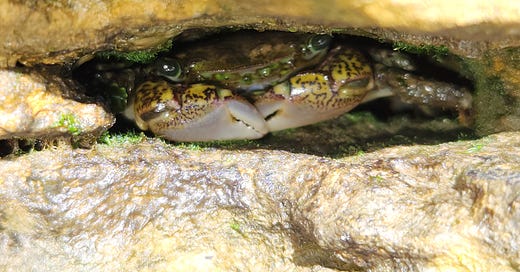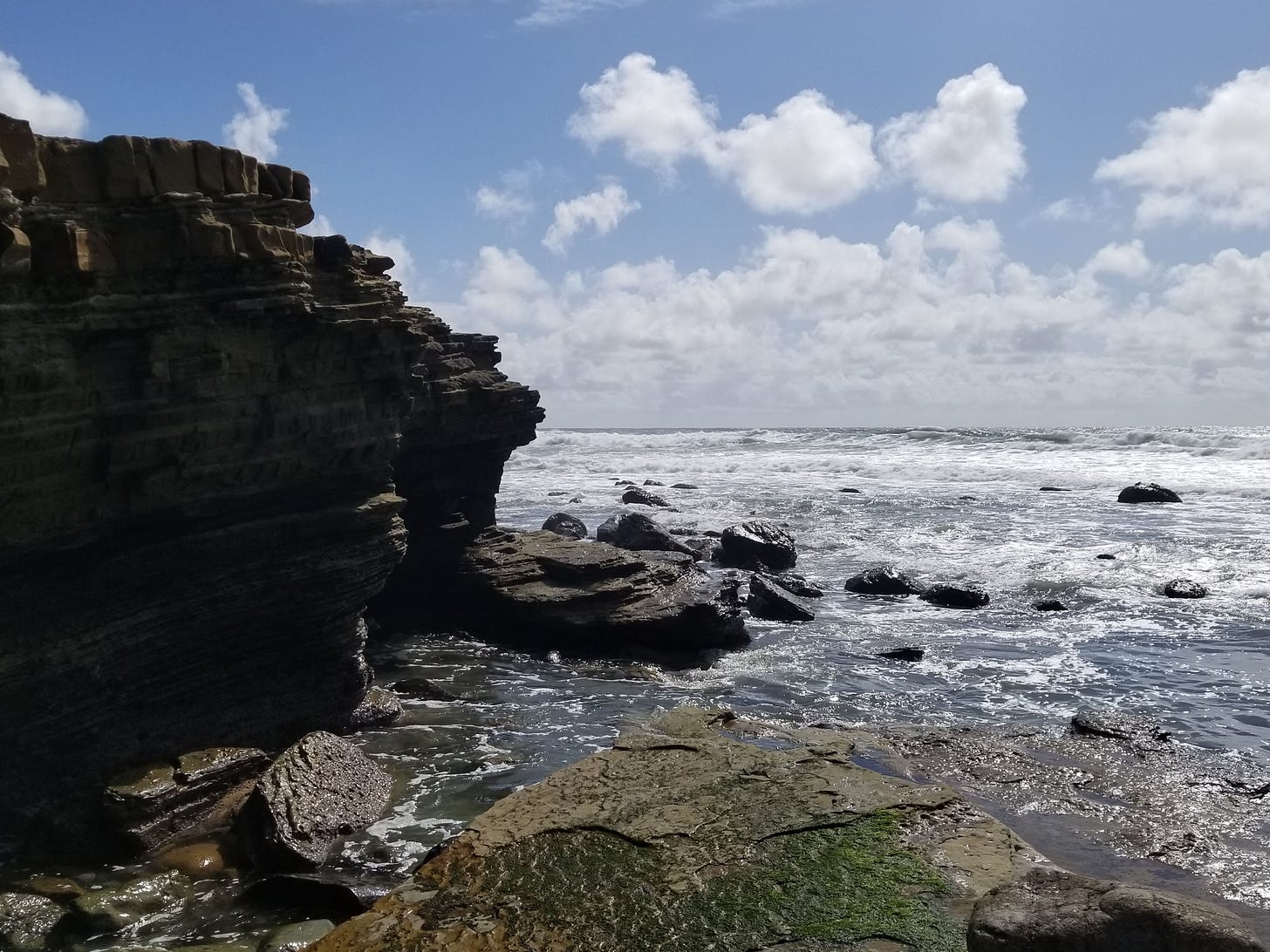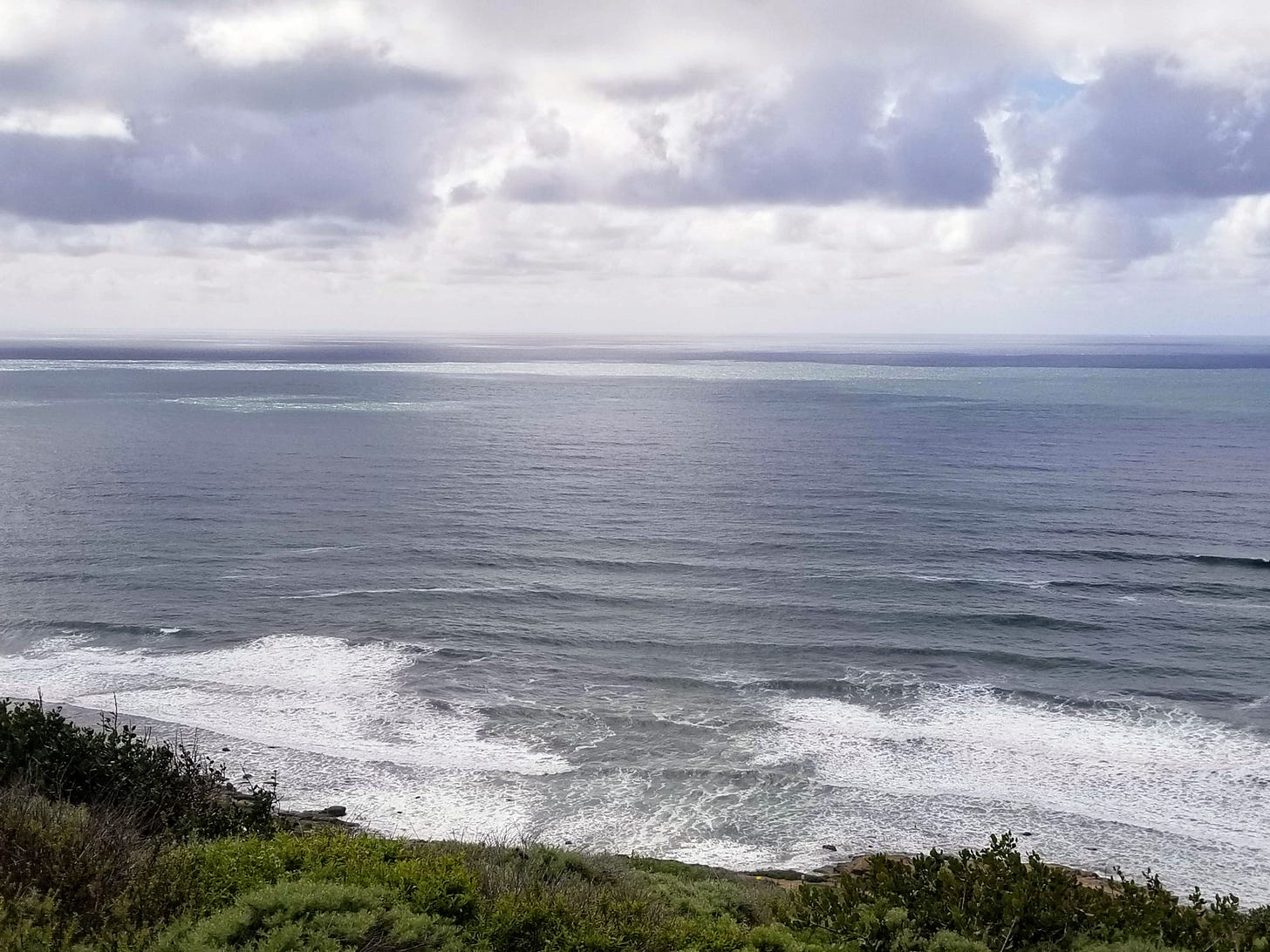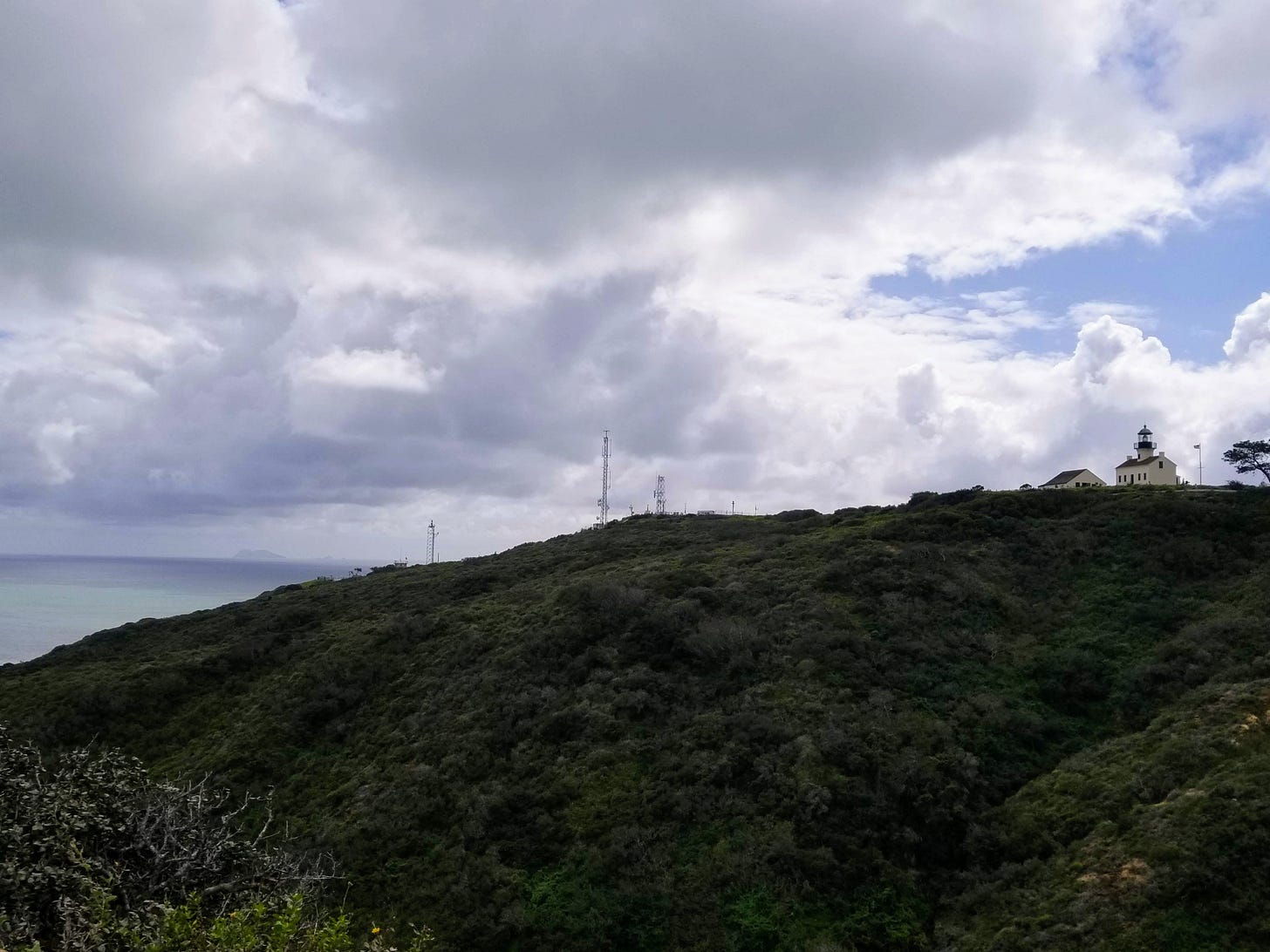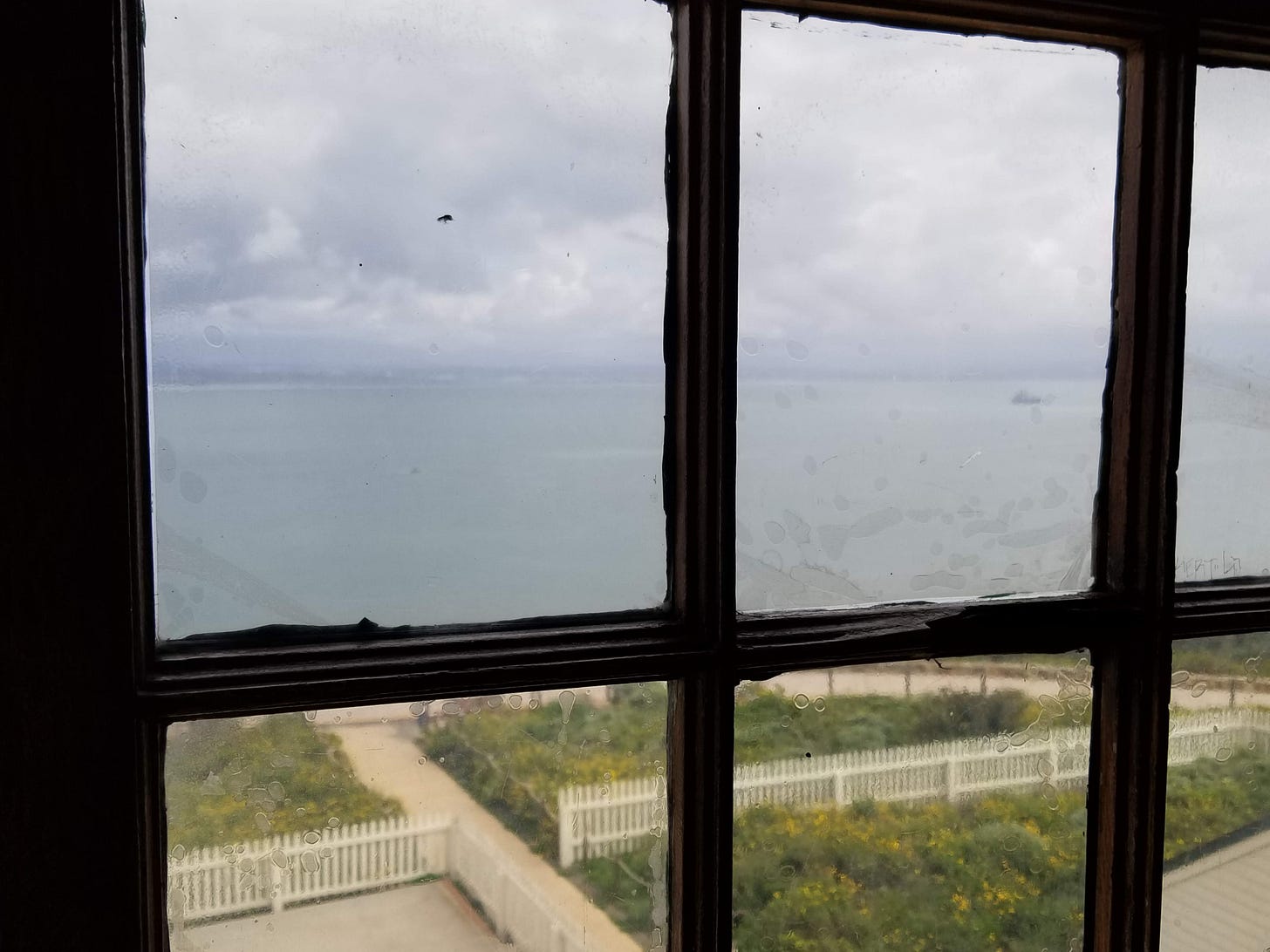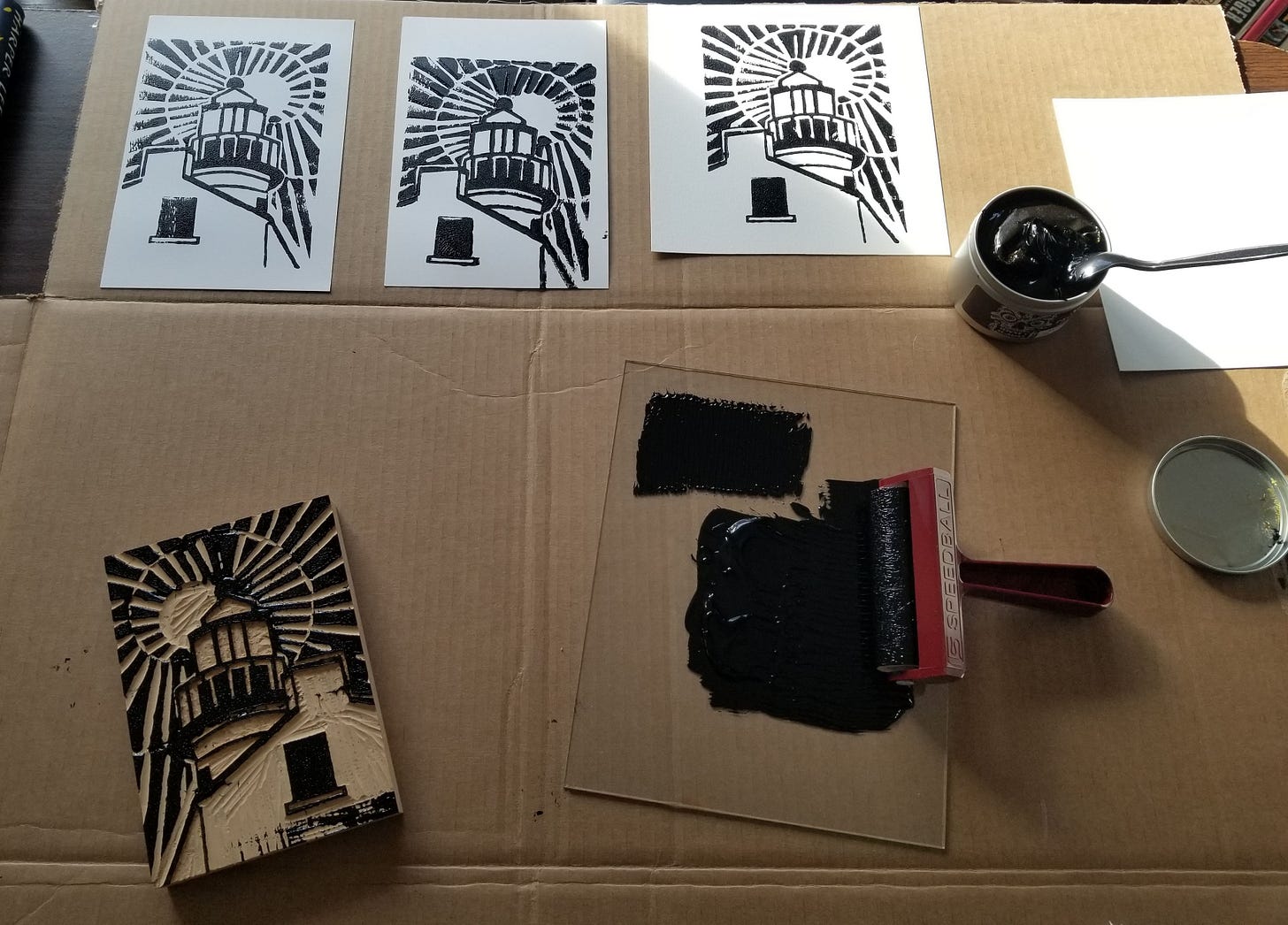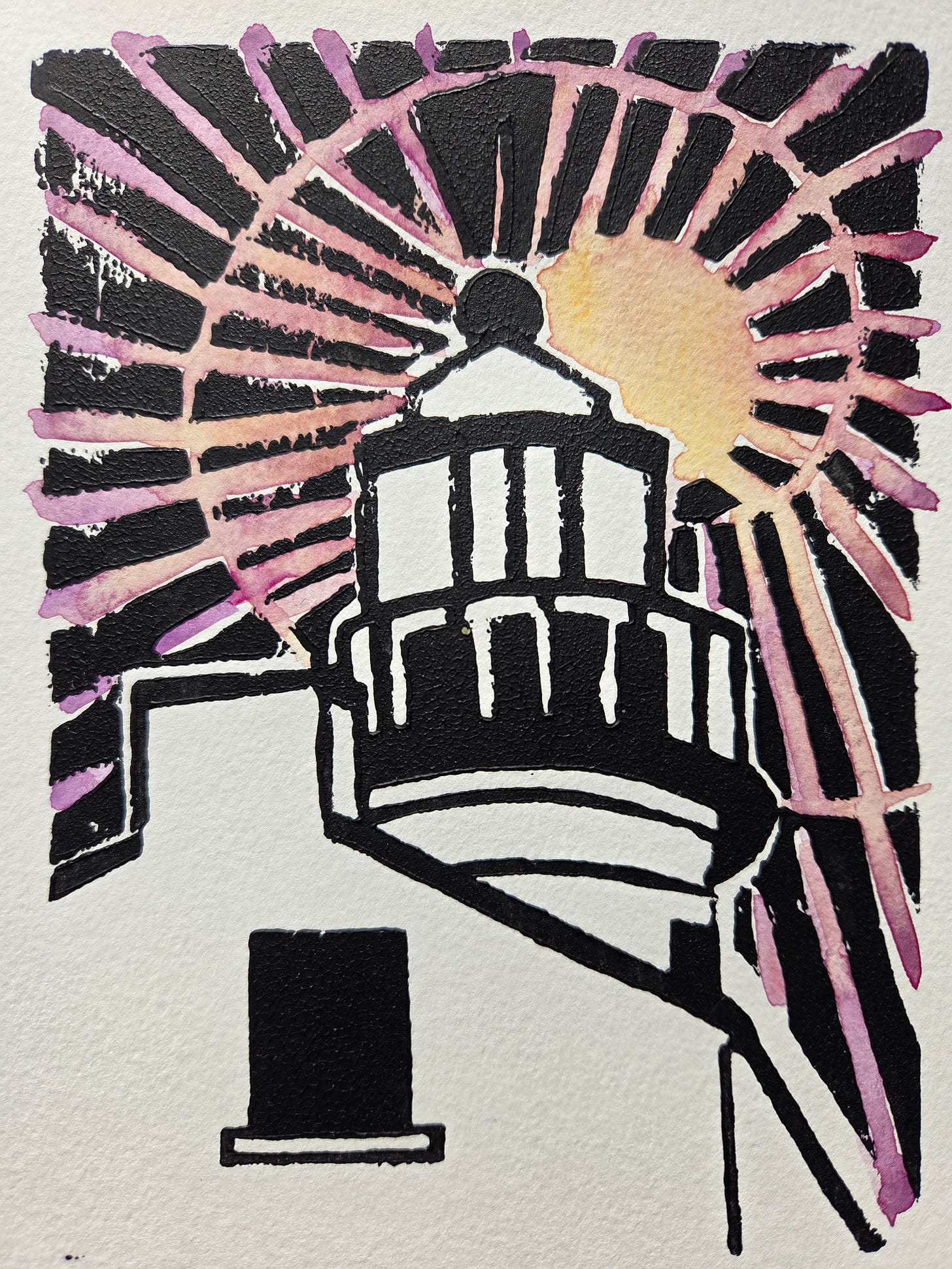This post details a first attempt at linocut as part of my ‘Art Experiments as a Maverick’ series. This series documents plunging into various arts projects as an amateur. Rather than figuring out how to do it right, this is the stage where I just get my hands messy and test drive the feel of a new to me art form.
Creating art allows us to immerse ourselves in the memory of a place, an experience, or a feeling. Let me introduce you to my muse for a day: Point Loma Lighthouse.
Sometimes a day surprises you. During a particularly hard time, Point Loma Lighthouse in San Diego Bay was an unexpected escape. For a few hours, I forgot what had been burdening my mind. My partner and I picked up sub sandwiches and drove up to the old lighthouse without much advance research. What a place to imagine another life and time.
This was a place of firsts for me. First time tide-pooling. First time climbing the spiral staircase inside of a lighthouse. First time seeing Fresnel prism in a lighthouse lantern. Experiencing for the first time is transportive. Absorbing. Freeing from stress and worry that has become too default. Being free of the familiar can draw us into the beautiful present. I didn’t want to miss a thing.
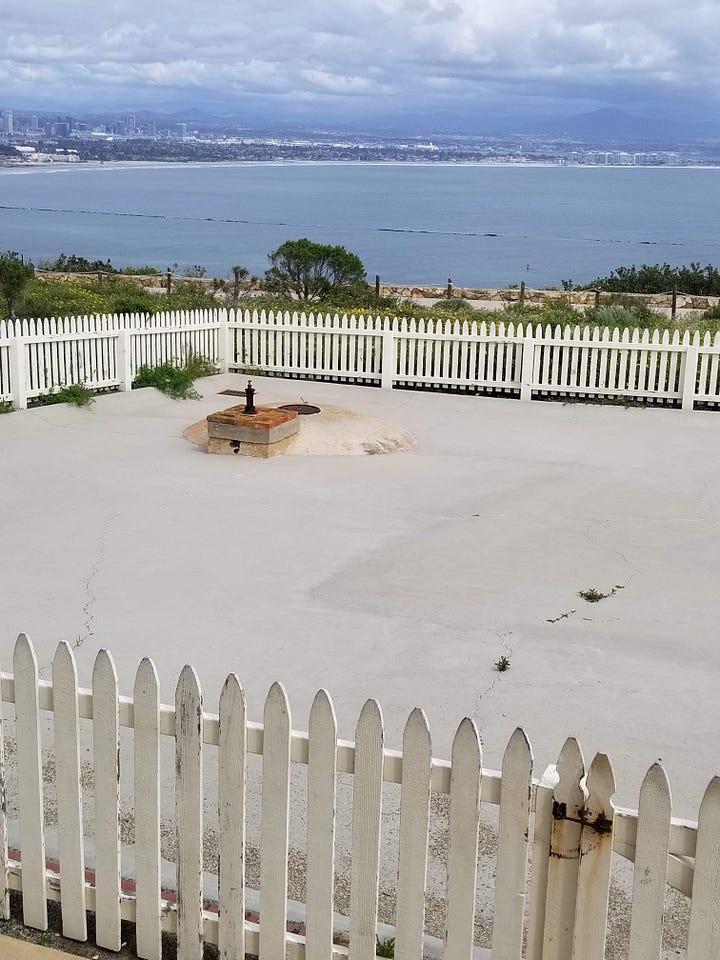
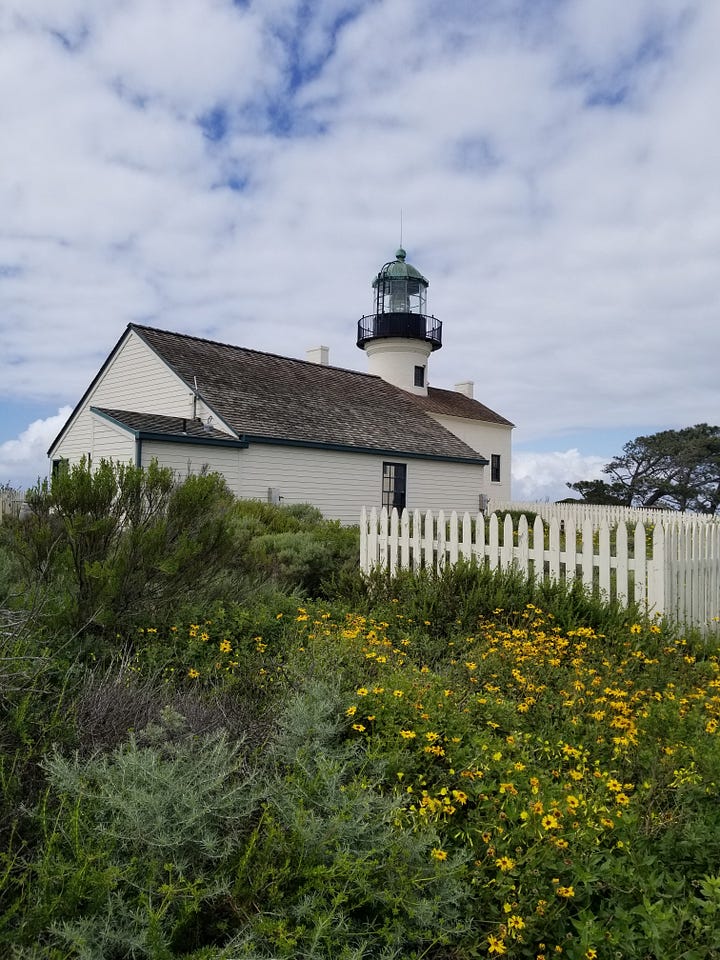
As we climbed up to the lighthouse, I imagined the lives that may have been lived here. Tending the kitchen garden. Being a tomboy who snuck away to the tidepools instead of doing domestic chores. Being a wife who pulled half the weight of keeping the lantern lit on the stormiest nights.
I learned that the concrete pad in front slanted to a cistern for capturing rainwater. That the children of the household took a boat across the bay for school. That life wasn’t easy there because of isolation.
This was a place a beauty I knew I wanted to represent in my art. A couple years went by before life settled down enough for me to dig these pictures out. I was eager to remember this place. To articulate a tiny bit of the beauty that had captivated me. I felt connected to life lived there amid vastness, beauty, isolation, and belonging to nature.
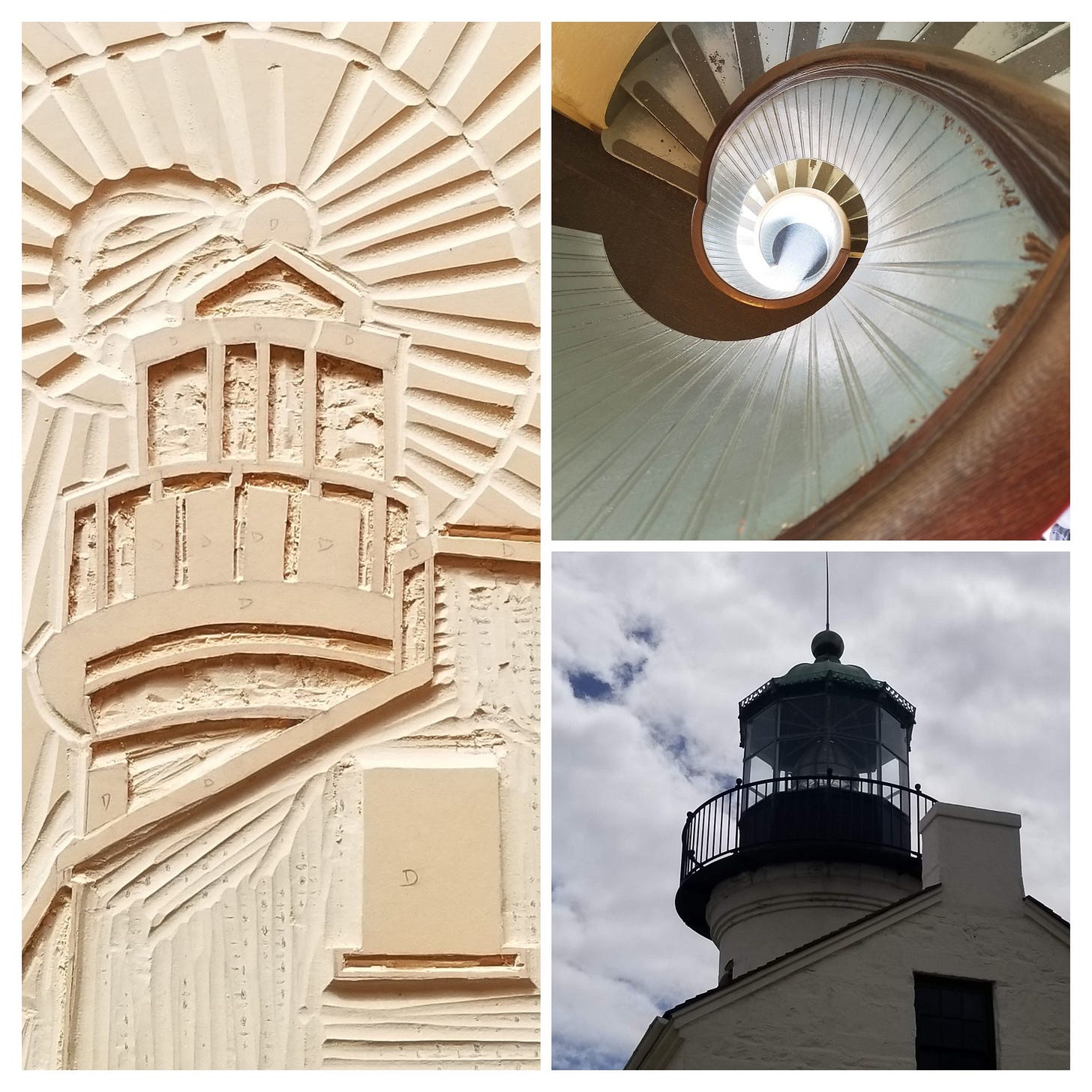
I chose relief printmaking as the art form for this project. In relief printmaking the desired design is carved into a material like linoleum for linocut or wood for woodblock printing. After carving, the residual material is inked for printing essentially created a large rubber stamp. Linocut was used here. I found a mounted linoleum block easy to work with as a beginner. The rubber was soft to cut through and the wood backing added stability.
The first step was sketching. I created several pencil sketches on scratch paper. The spiral pattern of the interior staircase was used to inspire the sky behind the lighthouse. Second, the sketch was drawn onto the linoleum itself using a mechanical pencil. Tracing paper can be used but I didn’t get that fancy. It worked well enough to sketch directly on the linoleum block and even erase as needed.
When I proceeded with carving, I was pleasantly surprised that the linoleum was easy to cut, sort of like a giant pink rubber eraser. I found a protective glove for my non-carving hand quite essential while carving.
To print, I placed a small amount of ink on a piece of glass (obtained for free from an old picture frame). The brayer is rolled in the ink and applied to the linoleum block. With the block inked side up, I laid watercolor paper across it and applied even pressure before removing.
The ink mostly dried to touch after 24 hours, but did not entirely dry for several weeks. I was disappointed to discover clean-up was not so straight forward as water soluble oil-based ink cannot enter the water supply.
The final step was the one I most eagerly awaited: watercoloring the linocut! This was accomplished using Winsor and Newton watercolors and Artify quill brushes. Quill brushes are designed for releasing a lot of water onto the page and facilitating blooms of color. I learned about them through Go with the Flow Painting by Ohn Mar Win. The book did not turn out to be my favorite style of painting in general. However, having experience with a looser style of watercolor worked well for this project.
I end each project by choosing one thing I really love about how the piece of art turned out. I live nowhere near this beautiful place and returning there at heart through this creative experience was a delight. The most satisfying thing about this piece is having brought together so many forms of art. Its creation depended on taking the photos, sketching, carving, printing, and water-coloring.
Have you ever used art to revisit your memory of a favorite place? I would love to hear what your muse was in the comments.
Materials used Sketching: Pencil and pink eraser Carving: Carving gouge set, protective cut resistant glove, Speedball 5"x7" mounted linoleum block Printing: 140lb Strathmore cold press watercolor paper, glass plate from a picture frame, Speedball professional relief ink supergraphic, Speedball soft rubber brayer Painting: Windsor and Newton Watercolor paint set, Artify Quill brushes size 0 and 2 Cost $4.50 Speedball 5"x7" mounted linoleum block $14 Speedball soft rubber brayer $20 8oz Speedball professional relief ink supergraphic The cost of this project was higher than my usual choices; I invested in the materials because it is an art form I would like to continue to pursue. Buying a carving gouge set and protective glove would have increased the cost but I was able to borrow them for this trial run. I already had watercolor materials, so those were happily not a new cost. Recommended books Marshall, Sam. (2023). Linocut: A Creative Guide to Making Beautiful Prints. Herbert Press. Spink, Jane. (2024). Nature Imprinted: A complete guide to lino printing with 10 nature inspired designs. Search Press. Win, Ohn Mar. (2022). Go with the Flow Painting: Step-by-Step Techniques for Spontaneous Effects in Watercolor. Quarry Books.

